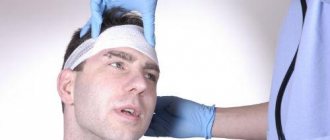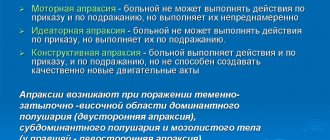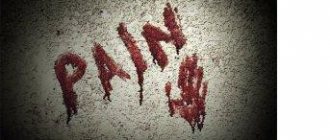A pinched sciatic nerve causes pain.
It is observed in an uncomfortable sitting position, during pregnancy or excessive physical activity.
If not properly treated, it can cause serious complications.
Treatment may include medications, physical therapy, and exercises for sciatic nerve inflammation.
The last point is an important part of therapy, which allows not only to relieve inflammation, but also to strengthen the muscles in this area to prevent re-inflammation.
What is sciatica?
This disease is a syndrome manifested by acute pain in the area of the sciatic nerve . At the site of the nerve itself or in the lower back, compression of the spinal cord roots occurs. There are many reasons for pinched nerve endings in the spine, and therefore the manifestations of the syndrome are very diverse.
The term sciatica refers to a syndrome, not a disease. The pathology itself is called lumbosacral radiculitis. Depending on the causes of manifestation, there are other options for the name of sciatica: radiculopathy, radiculoischemia.
Most people do not know about sciatica, its symptoms and treatment. The human body is a complex mechanism that consists of tissues and many nerve networks.
When the sciatic nerve is pinched, the pain spreads to the entire leg
The sciatic nerve is the longest . It is formed by 5 pairs of spinal cord roots. If even one gets pinched, rather unpleasant symptoms immediately appear. This compression of the nerve ending is called sciatica.
Signs of a pinched sciatic nerve
The sciatic nerve is one of the largest in the human body. It is formed from six nerve roots, originates in the region of the 4th and 5th lumbar vertebrae and, passing through the greater sciatic foramen, stretches to the popliteal fossa. The main sign of a pinched sciatic nerve is pain. In this case, it is the intensity of this pain that matters in order to determine how much the sciatic nerve suffers.
Anyone can do a simple test at home to see if they have signs of a pinched sciatic nerve. You need to bend forward and then straighten your back. If, at the moment of bending the torso, pain occurs in the back, which goes through the buttock and back of the thigh to the bottom of the leg, then there are definitely problems with the sciatic nerve. Neurologists and neuropathologists use several other tests. For example, the patient lies on his back on the couch and straightens his legs. Then the doctor begins to lift his leg and brings it to a 90-degree angle. If the sciatic nerve is inflamed or pinched, pain will certainly appear in the leg when lifting. The earlier the pain appears when lifting, the more complex the problem. In addition to pain, other signs indicate a pinched sciatic nerve:
- motor dysfunction;
- dysfunction of the pelvic organs;
- loss of sensation in the buttocks and back of the legs.
Basic principles of treatment
Complex therapy not only relieves pain, but also eliminates the causes that provoked the pinched nerve.
During the period of exacerbation of sciatica, when the pain is very severe, symptomatic treatment is carried out . To eliminate pain, various painkillers (Diclofenac, Ketanov), muscle relaxants and hormones are used. Antioxidants and vascular agents will help speed up the end of the attack, improving blood circulation and restoring the normal functioning of the affected tissues.
During remission, the pain disappears, but tissue nutritional disturbances and difficulties with movement remain . Therefore, maintenance therapy is necessary during this period.
For this purpose, physiotherapeutic procedures : massage, magnetic therapy, diadynamic currents, darsonvalization. They relax the muscles and eliminate pinched nerves, allowing for complete healing. These procedures eliminate recurrences of painful attacks.
Maintenance therapy also includes taking metabolic drugs, vitamins and antioxidants that restore blood microcirculation. If sciatica is caused by an infectious disease, then antibiotics may be used.
As a last resort, surgical treatment is performed. For example, with a hernia or tumor in the spine. Surgery is necessary if sciatic nerve compression has caused defecation disorder or urinary incontinence.
Why does pathology occur?
Doctors consider primary and secondary neuropathy. The primary cause is injuries, infectious diseases and hypothermia. The list of reasons that can cause a secondary type of illness is much more extensive. These include:
- disc displacement;
- neoplasms of any nature;
- osteochondrosis;
- protrusion;
- osteophytes;
- spasmodic muscles;
- curvature of the ridge;
- tunnel syndrome;
- intervertebral hernia;
- post-injection suppuration.
Exercise therapy for sciatica
Patients often ignore or underestimate prescribed exercises for sciatica. Many patients find that medications are more effective than therapeutic exercises. This opinion is clearly erroneous.
A set of properly selected exercises improves blood circulation, relieves inflammation and activates metabolism . Therapeutic exercises speed up recovery, and pain can be relieved in a few days.
In addition, other spinal problems that may cause sciatica are eliminated. All exercises are performed only in the absence of pain; during periods of exacerbation, training is strictly prohibited. The main thing is to do the exercises correctly.
Doing exercises is prohibited during the acute phase of sciatica. For gymnastics to be effective, you should adhere to certain recommendations:
- It is better to master the complex under the supervision of a doctor.
- Exercises will be beneficial if done twice a day.
- All exercises for sciatica are done on a hard surface.
- During an exacerbation of the disease, breaks are allowed, but then you need to continue performing the complex, taking into account your state of health.
- Gymnastics should be done regularly. If there is no desire or strength, then you should not cancel the training, you need to do at least 2-3 exercises at half strength.
If the disease is in the acute phase, then the exercises are not performed until the pain disappears.
Physical activity is also undesirable in some pathologies:
- Mental disorders.
- Epilepsy (frequent seizures).
- Serious spinal injuries.
- Oncology.
- Heart diseases.
- Viral infections that are accompanied by fever.
Due to these restrictions, you should first consult a doctor or undergo a full examination.
Video: “The most effective exercise for pinched sciatic nerve”
Find out more about spinal neuralgia:
- Radicular syndrome with osteochondrosis in the cervical spine
- You can find out how to give injections for sciatica here
- A list of ointments for sciatica is posted on the page
Diagnostics
If signs of sciatica appear, you should consult a doctor.
Before prescribing treatment, the doctor conducts a diagnosis.
The clinical picture of the disease is usually clear after examination.
The following activities are prescribed:
- X-ray of the lumbar spine and pelvis;
- Magnetic resonance imaging\computed tomography;
- Ultrasound examination;
- Myography.
The doctor will definitely prescribe a blood test to check for infections in the body.
If the attending physician suspects the presence of a tumor or neoplasm, the patient is prescribed a radioisotope scan.
Exercise technique
Did you know that...
Next fact
If you perform the exercises correctly, gymnastics can completely replace drug therapy. All movements of the complexes are physiological and natural, so there will be no fatigue or sprains .
There are many exercises for inflammation of the sciatic nerve, and they are divided into certain groups.
In a lying position:
- Pulling your knees to your chest while lying on your back. Perform at least 10 times.
- Lying on your side, stretch your legs as far as possible. Then bend both legs and pull them towards your chest, then straighten. Do the same 10 times.
- Lie on your stomach. Palms near shoulders. Straightening your arms, stretch your back as much as possible, looking up. Make a short delay and return to your previous position. For beginners, 5 approaches will be enough, but over time you can increase to 15.
- Lie on your back. Pull your feet towards your buttocks. Arms crossed over chest. As you inhale, you should raise your torso, and as you exhale, lower it. Performed 15 times.
Sitting:
- Sit on the floor and stretch your legs forward. Spread your arms to the sides (at shoulder level) and bring them back, trying to connect your shoulder blades. Movements should be made smoothly, without jerking. Repeat at least 5 times.
- From a sitting position (arms extended upward), slowly lie on your back. Then raise your legs to a right angle. The lower back should not lift off the floor, as this will place excessive stress on the spine.
- Sit on a chair. Place your hands on the back of your head and make slow turns with your body.
Standing:
- Feet shoulder-width apart, back as straight as possible. Raise your right hand and lean to the left. The arm and torso should be parallel to the floor. Then return to the starting position and lean to the right.
- Hands on the belt. You need to take turns raising your straight leg. It doesn’t have to be high, you should focus on your feelings.
- Place your feet as wide as possible. Bend your knees (“rider pose”) and shift your weight to each leg in turn. This exercise improves blood circulation in the pelvic area.
Gymnastics for the prevention of sciatica
All exercises are an excellent way to prevent sciatica . Regular implementation of the complex will prevent the sudden onset of a painful attack.
Video: “Exercises for pinched sciatic nerve”
Exercises for acute back pain
With sciatica, lumbago (lumbago) often occurs . To relieve severe pain, there are two exercises that eliminate pain and restore motor activity.
- You need to stand at a horizontal surface, which should be at pelvic level. For example, a table or a couch. Slowly lie down on it with your body and relax well. While inhaling, inflate your stomach for 5 seconds, then exhale as much as possible. Repeat no more than 3 times.
- Take a position on all fours. The back should not bend. Relax your neck and lower your head. Inhale with your stomach (slow), hold for 5 seconds, exhale completely. After performing this breathing exercise 10 times, a person will notice how the pain recedes.
In order not to suffer from acute pain due to sciatica, it is advisable to visit the pool , take long walks, and ride a bicycle. I would recommend doing yoga, but with an experienced instructor.
FAQ
Will exercise therapy help you recover faster after a hernia removal?
Yes, it will help. The main thing is to strictly follow all the doctor’s advice, do not rush, and do not increase the load ahead of time.
Is it possible to do exercise therapy for Schmorl's hernia?
Yes. Exercise therapy can be done for any type of hernia, when the acute pain subsides. The main thing is to choose the right set of exercises. If you have a Schmorl's hernia, you definitely need to pump up and strengthen the muscles, especially the back and abdomen. It is important to remember: weight bearing is contraindicated.
Is it possible to do exercise therapy for a sequestered hernia?
It is possible, but we must proceed from the fact that exercise therapy cannot be done during the acute phase. When the pain subsides, light exercise is allowed after consulting a doctor. Water gymnastics gives a good effect.
Themes
Intervertebral hernia, Spine, Pain, Treatment without surgery Date of publication: 11/12/2020 Date of update: 03/16/2021
Reader rating
Rating: 5 / 5 (3)
Exercises according to the Bubnovsky system
To eliminate sciatica, a special complex has been developed aimed at toning the spinal muscles and normalizing joint mobility:
- "Cat" . You need to get on all fours and bend your back down as you inhale, and arch your back up as you exhale.
- "Pumping" . In the same position, do push-ups from the floor. Inhale - bend your arms, exhale - straighten them.
- "Pulling" . Lie on your back, bend your knees, and clasp your hands behind your head. As you exhale, touch your elbows to your knees, and while inhaling, return to the starting position.
- "Bridge" . Performed while lying on your back. As you exhale, the lower back rises, and as you inhale, it lowers.
An example of how to do the cat exercise correctly
What exercises are contraindicated
Therapeutic exercises for sciatica always begin with a warm-up. Then they do stretching, gradually making the movements more difficult.
What exercises are prohibited to perform with this disease? Do not approach the bar under any circumstances . Excessive stress will further compress the intervertebral discs and can completely destroy them.
What not to do:
- Tilts and turns with weight . Friction occurs between the vertebrae, and this leads to disc injury.
- It is forbidden to squat with weight if the simulator is set to a rigid trajectory of movement, which does not always correspond to the anatomical structure of the spine.
Oddly enough, the most harmful thing for the spine is lying for long periods of time. To avoid pain in the lumbar region, the spinal column must have a strong muscular corset.
Video: “What exercise therapy exercises to do for sciatic neuralgia”
Symptomatic manifestations
A pinched sciatic nerve is a very severe, sharp pain that most often appears suddenly. The patient takes a forced, often uncomfortable, body position that brings him less suffering.
The patient complains of tingling or numbness in the lower extremities. A pinched nerve cannot be confused with something else. When moving, severe pain occurs that permeates the lumbar region, passes through the gluteal region and radiates to the entire lower limb. During laughter, coughing and other sudden movements, pain shoots through the lower back and leg. Treatment for a pinched nerve must be provided without delay, otherwise the loss of sensation in the legs will progress.











